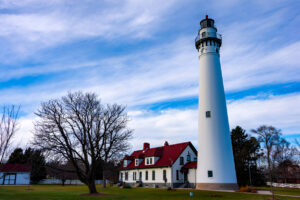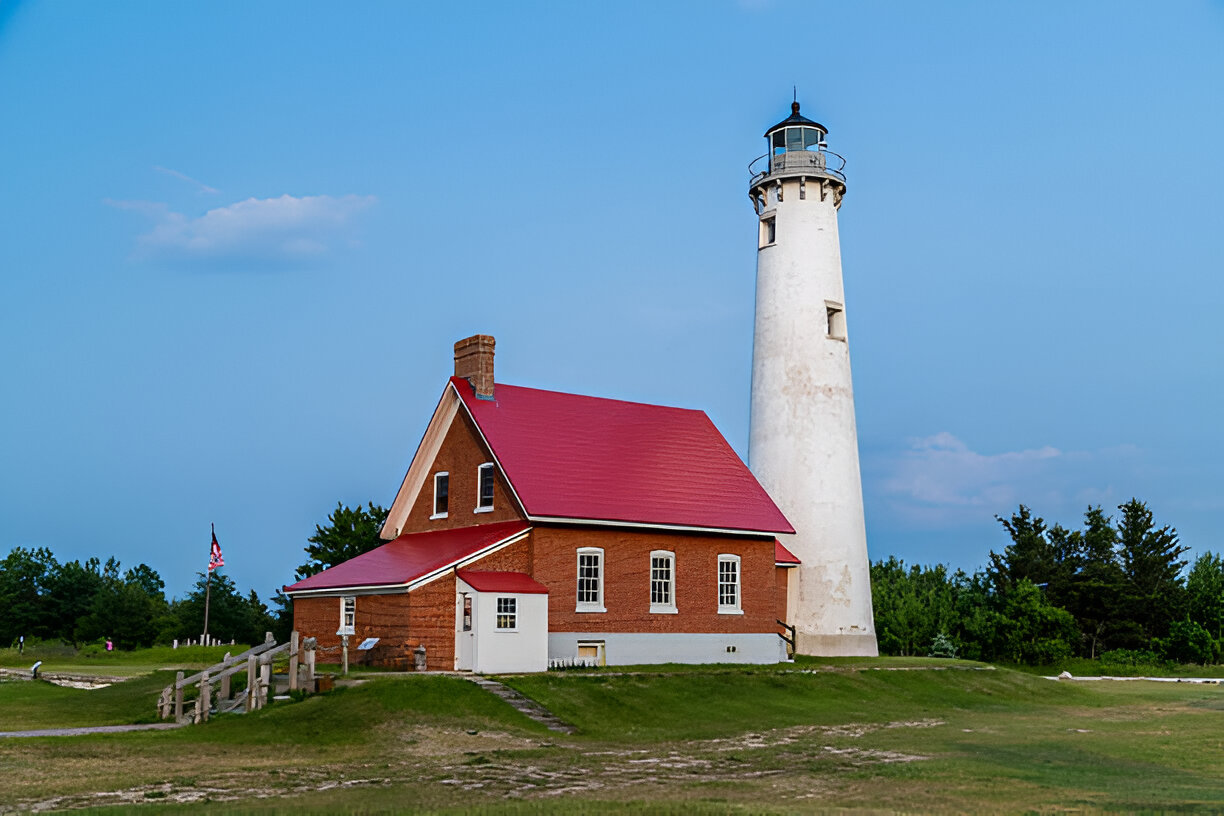What animals lived in east tawas michigan in the 1800s, was once a flourishing home for a surprising assortment of untamed life during the 1800s. With thick timberlands, wetlands, and freshwater lakes, the region gave an optimal natural surroundings to various creature species. This normal variety assumed a fundamental part in the existences of Local American clans, particularly the Ojibwe, and later European pioneers. Investigating the creatures of this time uncovers the region’s normal magnificence as well as the necessary part these animals played in the environment and day to day existence. How about we venture back to the nineteenth hundred years and find what creatures wandered East Tawas, improving its set of experiences and legacy.
1. East Tawas Environment during the 1800s
During the 1800s, East Tawas was a land overflowing with rich biodiversity, because of its one of a kind biological systems of lavish woodlands, broad wetlands, and plentiful water sources. The locale’s area close to Lake Huron gave a consistent water supply, establishing a flourishing climate for an assortment of widely varied vegetation. Tall hardwood trees, thick underbrush, and fruitful soil gave safe house and food sources to well evolved creatures, birds, and bugs, while the wetlands filled in as essential favorable places for creatures of land and water and waterfowl. The gentle, mainland environment of East Tawas further upheld occasional untamed life designs, permitting creature populaces to thrive. This different biological system made East Tawas a focal center point for local species, making way for complex pecking orders and cooperative connections that molded the region’s regular history.

2. Well evolved creatures of East Tawas in the nineteenth Hundred years
During the 1800s, the thick woods and boundless glades of East Tawas, Michigan, were home to a variety of vertebrates that molded the region’s biology and became fundamental for the existences of Native people group and early pilgrims. White-followed deer, for instance, flourished in the woodlands and were a vital wellspring of food, dress, and materials for devices. Wolves meandered as dominant hunters, keeping a characteristic equilibrium by controlling the populaces of more modest creatures like deer and bunnies. Mountain bears, frequently seen searching in the forest, gave a wellspring of meat and fur. Other outstanding warm blooded animals, like elk and a periodic moose, added to the district’s biodiversity. Beavers, valued for their fur, likewise assumed a basic part by making streams that influenced the encompassing environment what animals lived in east tawas michigan in the 1800s.
3. Birds Local to East Tawas during the 1800s
The skies of East Tawas were buzzing with an assortment of bird animal groups during the 1800s, drawing bird-watchers and naturalists who wondered about the variety. Bald eagles, images of solidarity and opportunity, were a typical sight along the shores of Lake Huron. Wild turkeys, a fundamental food hotspot for Local Americans and pilgrims, wandered unreservedly in backwoods and open spaces. Traveler pigeons, when numbering in the large numbers, obscured the skies with their herds yet unfortunately became wiped out by the mid twentieth hundred years due to overhunting and living space misfortune. Extraordinary blue herons flourished in the wetlands, swimming smoothly as they chased after fish. Flying predators, similar to owls and falcons, likewise possessed East Tawas, keeping up with balance by going after more modest creatures what animals lived in east tawas michigan in the 1800s.
4. Fish and Oceanic Life
The freshwater territories around East Tawas, including Lake Huron and close by streams, upheld a unimaginable scope of oceanic life during the 1800s. Lake sturgeon, one of the most seasoned fish species, swam these waters, esteemed by Local American clans for their meat and importance in nearby legend. Trout and salmon were bountiful, filling in as a staple food hotspot for both Native clans and European pioneers who depended on looking for endurance. Pike and walleye were additionally normal, their presence fundamental in keeping up with the wellbeing of the sea-going environment by filling in as prey for bigger creatures. Other more modest animals, similar to mollusks, mussels, and crawfish, were critical in sifting water and giving food to bigger fish and birds, adding to a fair biological system.
5. Reptiles and Creatures of land and water of the District
East Tawas likewise facilitated a different cluster of reptiles and creatures of land and water during the 1800s, each assuming a novel part in the nearby environment. Snapping turtles were a typical sight in the lakes and bogs, known for their enormous size and strong jaws, which made them imposing trackers. Fastener snakes, innocuous to people however essential to the biological equilibrium, were boundless, controlling bug and little rat populaces. Frogs and lizards flourished in the wetlands, going about as the two hunters and prey in the food web. These creatures of land and water gave food to birds and vertebrates as well as aided control bug populaces, which was fundamental for crop insurance and the equilibrium of normal greenery. These reptiles and creatures of land and water made an interconnected biological system that supported East Tawas’ biodiversity what animals lived in east tawas michigan in the 1800s.
6. The Job of Local American Clans and Early Pilgrims in the Neighborhood Natural life
The Local American clans, especially the Ojibwe, had a profound relationship with the natural life in East Tawas. They used nearby creatures as significant assets, depending on deer, elk, and beavers for food, clothing, and making materials. Early European pioneers likewise relied upon nearby untamed life for endurance, particularly through hunting and fur exchanging, which turned into a significant financial action in the locale. The fur exchange brought the two networks into nearer communication, forming a special connection among people and creatures. Nonetheless, as pilgrims extended their presence, hunting and land improvement started to decrease creature populaces, inciting the requirement for preservation mindfulness. Understanding this perplexing connection among people and untamed life offers knowledge into what East Tawas’ environment was both treasured and meant for by its occupants.
7. Protection Endeavors and Untamed life Changes After some time
As East Tawas developed and created, logging, hunting, and land getting exercises started to upset the sensitive equilibrium free from the locale’s biological system. Enormous warm blooded creatures like wolves and elk saw their numbers diminish because of living space misfortune and unregulated hunting. Accordingly, the mid twentieth century brought the starting points of preservation endeavors as individuals understood the need to safeguard Michigan’s regular legacy. Natural life assurance regulations were presented, planning to protect local species and reestablish creature populaces. Throughout the long term, a few animal varieties have gotten back in the game, while others stay scant. The protection endeavors go on today, with associations attempting to shield East Tawas’ leftover untamed life and advance a decent biological system, mirroring the district’s obligation to safeguarding its normal history for people in the future.
8.Every now and again Clarified some things (FAQs)
Q1: Were there wolves in East Tawas, Michigan, during the 1800s?
A: Indeed, wolves meandered the backwoods of East Tawas during the 1800s and were significant for keeping a fair biological system. As dominant hunters, wolves controlled the populaces of more modest creatures, like deer and hares, forestalling overpopulation. Their presence likewise molded the way of behaving and relocation examples of different creatures. Wolves were regarded by Local American clans for their solidarity and knowledge, frequently highlighted in old stories. Notwithstanding, as pilgrims extended their hunting domains, the wolf populace declined because of natural surroundings misfortune and hunting, prompting their close eradication in the area.
Q2: What has been going on with the Traveler Pigeons that lived in East Tawas?
A: Traveler Pigeons were once among the most plentiful bird species in North America, with immense groups obscuring the skies over East Tawas during the 1800s. Nonetheless, because of broad hunting and deforestation, which annihilated their regular living spaces, Traveler Pigeons quickly declined. In spite of their immense numbers, they couldn’t endure the effect of human action and were announced terminated by the mid twentieth hundred years. This grievous misfortune fills in as a sign of the significance of economical practices in protecting natural life.
Q3: Did Local Americans in East Tawas chase creatures for endurance?
A: Totally. Local American clans, including the Ojibwe, depended on hunting neighborhood creatures to help their networks. They chased white-followed deer, elk, and different warm blooded creatures for meat, dress, and instruments. Fishing in adjacent waterways and Lake Huron additionally gave fundamental assets. This relationship with nature was set apart by regard and equilibrium, as Local Americans put stock in using creatures mindfully and supporting normal populaces, diverging from later practices that prompted untamed life consumption
Q4: What was the effect of signing on East Tawas natural life?
A: Logging, particularly in the late nineteenth 100 years, fundamentally influenced East Tawas’ natural life. Getting huge parcels free from woodland eliminated basic territories for some species, prompting a decrease in populaces of bigger warm blooded creatures, birds, and even creatures of land and water. With the deficiency of old-development backwoods, creatures like wolves and elk had to migrate or confront eradication in the area. The deforestation likewise upset soil soundness, water sources, and vegetation, which thus impacted the whole environment. These effects provoked early preservation measures as individuals saw the worth in saving regular assets.
Q5: Are there any species from the 1800s that are currently wiped out in East Tawas?
A: Indeed, the Traveler Pigeon, when common in East Tawas, went terminated because of over the top hunting and territory obliteration. While different species like the Lake Sturgeon have confronted serious populace declines, they have not become wiped out. Endeavors to secure and reestablish these species are progressing, featuring the basic job of protection in forestalling further misfortune.

9.End:
East Tawas, Michigan, was once an energetic home to different creature species that shaped an interconnected biological system and assumed fundamental parts in the existences of Local American clans and pilgrims the same. After some time, human exercises have fundamentally changed this scene, yet endeavors to safeguard and reestablish the region’s wild
